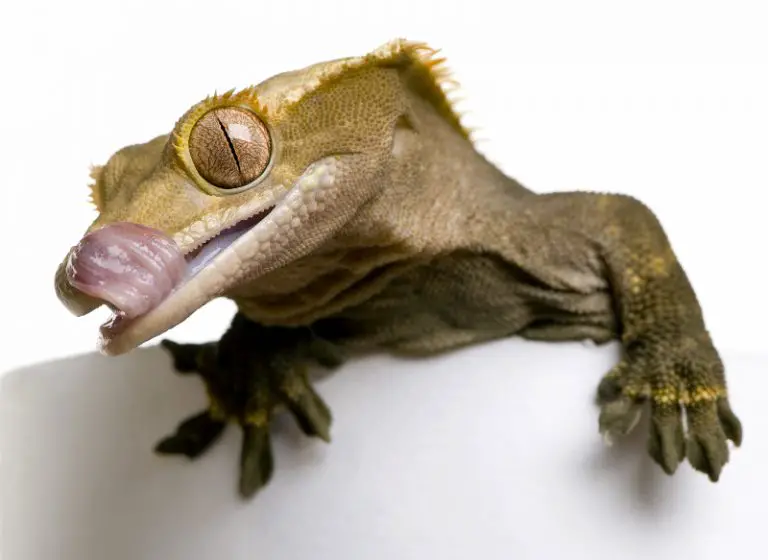Types Of Crested Geckos: Morphs, Colors And More

Crested geckos come in a lot of different colors and patterning. Many of these patterns are referred to as “morphs”. When we talk about types of crested geckos, it’s these morphs that we are referring to. Although morphs are common, crested gecko genetics (what causes these different morphs) are quite complicated. Because of this, no two crested geckos will look the same.

Contents
Table of Contents
Types Of Crested Geckos:
In this artice, I describe the crested gecko types by explaining what morphs are and taking you through a crested gecko morph guide. I also describe how morphs and colors are different and how genetics works in humans vs determining crested gecko color morphs. Finally, I discuss whether there will be more crested gecko morphs discovered in future
One thing is for sure, if you are thinking of getting a crested gecko, you’re going to get a unique animal.
What Is A Crested Gecko?
Crested geckos are one of the most popular pet lizards in the United States. They are so popular because they are easy to care for. They don’t need a lot of hands-on care, so they are perfect for beginners.
These geckos are very docile and are easy to handle. Although, they don’t like being handled very much, so owners don’t need to give their gecko a lot of attention.
Although their diets are complex, they are easy to feed. There are commercially-made foods specifically for crested geckos that meet all their nutritional needs.
One of the reasons they are so popular is because of their coloration. There are lots of different colors and patterns that crested geckos come in. There is always something for someone, no matter what your taste is.
What Is A Crested Gecko Morph?
A “morph” is short for the word “polymorphism”. It refers to the different colors and patterns found within a species. There are several different crested gecko morphs. Some are natural, while others have been genetically created over the years.
“Morph” refers to a single observable characteristic in an animal. This is what sets species apart. The “poly” in polymorphism means that there are multiple visually-distinct variations of a single species. Because crested geckos come in all different colors and patterns, they are considered “polymorphic”.
In order for something to be considered a “morph”, it must be inherited. The genetics of crested geckos is quite different than that of other animals. This makes breeding them quite difficult. Even when they take extra care, breeders are not always sure what kind of babies they’re going to get. We’ll go more in-depth on that later.
Are Crested Gecko Morphs And Crested Gecko Colors And Patterns The Same Thing?
There are many different types of crested gecko morphs. You may be wondering what the difference is between a “morph” and a simple pattern.
Generally speaking, morphs are the same thing as the colors and patterns. Particular patterns like “tiger” and “flame” are specific morphs. However, this isn’t always the case.
Not every color variation in a crested gecko is considered a “morph”. “Pinstripes”, for example, are a patterning on crested geckos that is not considered a morph. Instead, it’s considered a single, independent trait.
Kinds of Colors
Crested geckos come in a wide range of colors. This is one of the reasons why they make such popular pets. People can’t get enough of their colors and patterns.
These geckos come in all kinds of colors, from very pale cream to an almost near-black. They may also come in more “moderate” colors like buckskin, olive, red, and yellow.
The more vibrant a gecko is, the more likely they are to be desired. People tend to like geckos with high contrast. A gecko with a very light body and dark patterning is more desirable than a gecko with a dark body and also dark patterning.
Moonglows
Years ago, people thought it was possible for crested geckos to be pure white. These were referred to as “moonglow” geckos. Moonglows are not a true color variation, though.
A moonglow is really a “fired down” version of a yellow or red cream gecko.
Firing Up
Geckos, like many reptiles, can change color based on their mood or environment. When crested geckos change their color because they’re on higher alert, this is called “firing up”. Their colors will be more vibrant during this time.
Many times, a gecko will “fire” because of its emotions. It could be happy, upset, or stressed. But it might not be linked to their emotions at all. Some geckos use firing as a way to camouflage themselves. They may also use it to communicate with other geckos.
Change in color can also be a response to their environment. Things like temperature, humidity, and light can all cause changes in color.
Firing Down
This state is similar to “firing up” except that the lizard will be less alert. This state usually occurs when the gecko is less alert or is sleeping. Their colors will become darker and more subdued.
Can They Be Blue?
Scientists aren’t certain, but it’s likely that crested geckos are unable to produce blue colors. This is because they likely lack the pigment that is required to do it. Because of this, there’s no such thing as a true “green” crested gecko as some people claim.
Crested geckos can be an “olive” color, which is similar to green. Rather than being a “real” green though, it’s more of a combination of browns and yellows. No one has seen a true green, blue, or purple crested gecko.
Read more about green geckos here.
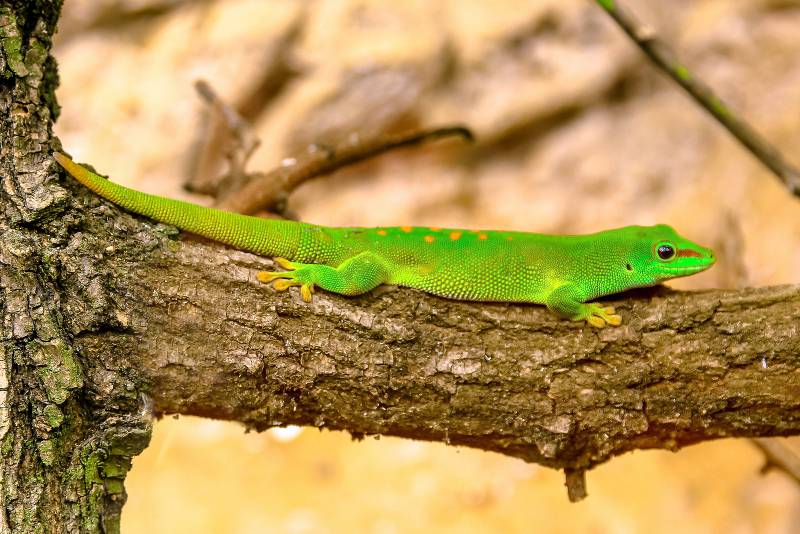
Watch this video: Types Of Crested Geckos: Morphs, Colors And More
Different Types Of Crested Geckos
Because we already did an in-depth article about crested gecko morphs, we won’t go into much detail here. But, here is a crested gecko morphs list:
Patternless
To be patternless means just what you think it does…the gecko has no pattern! Instead, the animal will be a solid color like cream, red, or near-black.
Bi-Color
Bi-color crested geckos are also patternless, but they have two colors instead of one. Usually, the color on the top of their heads and back will be darker than the color on its body.
Tiger
Tigers are seen in the same colors as the patternless geckos. The difference is that they will have dark, tiger-like stripes along their body.
Flame
The body of a crested gecko flame morph can usually be any color common to crested geckos. However, their dorsal back is almost always a cream color. The dark flame-like shapes will cover the cream-colored dorsal back.
Harlequin
Harlequins are another kind of flame gecko, but they have more of a flame-pattern. Flame geckos will only have patterning on their dorsal back. Harlequins will also have patterning on the sides of their body and down their limbs.
Pinstripes
Pinstripes are characterized by a single, independent trait rather than a group of them. “Pinstripes” refer to a line of raised scales along the sides of the gecko’s body. These raised scales will most typically be cream-colored, and they will rim the dorsal back area.
Most crested geckos with pinstripes are also “flame” or “harlequin” morphed geckos. As you can see, a gecko can both be a “flame” gecko and have pinstripe patterning. This is because the “pinstripe” is an individual trait rather than a “morph”.
Dalmatian Spots
Spots are also considered an independent trait rather than a “morph”. Spots will be spread about the body in multiple sizes. Usually the spots will be black, but they can also be red, green, or white.
Since spots are an independent trait, they can be found in any morph.
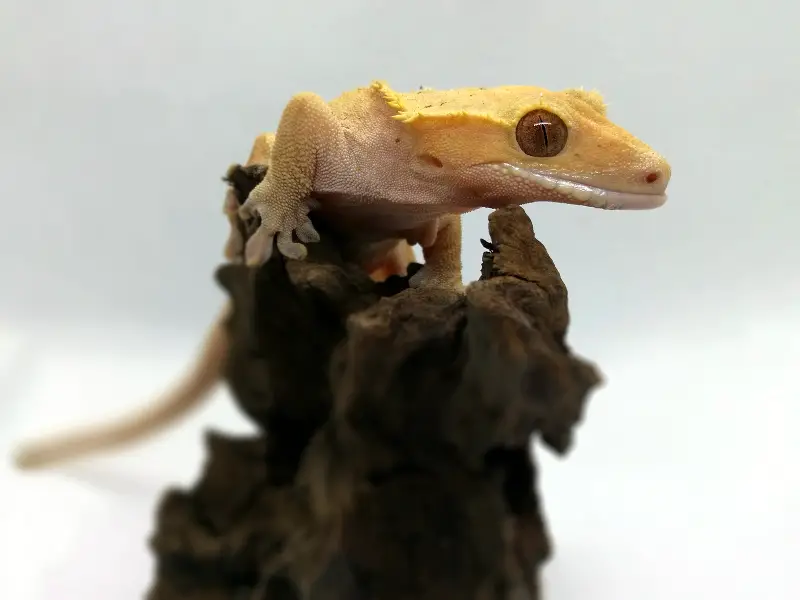
Crested Gecko Genetics
Crested gecko genetics are quite different than that of other animals and reptiles. Because they’re polymorphic, they’re more difficult to breed. Here, we’ll dive deeper into the genetics of crested geckos and what breeders watch for.
Morphs VS Lines
As we discussed, “morph” refers to the physical characteristics of the gecko. A “Line” refers to a specific set of offspring raised by a breeder. Today, breeding is done by selective breeding to achieve more specific results.
Genetics Basics
Genetics can be a bit difficult to get into here because we have limited space and genetics are complex. We’ll cover what’s most important.
Dominant & Recessive Genes
Generally, we have what are called “dominant” and “recessive” traits. We also have “alleles” which make up a gene and determine how a physical trait will look.
Take red and brown hair for example. Brown hair is a dominant trait, while red hair is a recessive trait. If one parent has brown hair and the other parent has red hair, the child will only have a 25% chance of having red hair.
Instead, the child will have a 75% chance of having brown hair. Still, this doesn’t mean that the kid will be “purely” brown haired. There is a 25% chance that they will have both dominant alleles for brown hair. But, there is a 50% chance that they will have one dominant allele for brown hair and one recessive allele for red hair.
If the child has one dominant and one recessive gene, they will have brown hair. This is because the dominant allele (brown) masks the recessive gene (red).
But, since the child has that red recessive gene, it is possible to pass red hair onto their own offspring in the future. The easiest way to understand this is to look at a punnett square to see where the alleles are going.
Genetics is more complex than what we can get into here. For a more in-depth look into genetics, check out this website. It will give you examples of punnett squares that can be used to determine the likelihood of an offspring’s outcome.
(Here is an image I found on google of a punnett square for red and brown hair. If you can include that here, it is a good visual. https://www.familyeducation.com/sites/default/files/inline-images/punnett-squares-example.jpg )
It is important to know these genetics basics. This is how most of the world works. However, it is NOT how crested geckos work.
Crested Gecko Genetics
Crested geckos are different from other reptiles because they are “polygenic”. This means that there are several genes controlling the gecko’s phenotype rather than just one. This makes their colors and patterns unpredictable.
Breeding Is Unpredictable
Breeding crested geckos is considered “unpredictable” because the genetics are not numerically predictable like a lot of other reptiles. Other species use the basic dominant and recessive patterns to breed certain morphs. They can get these morphs because they’re based on one gene.
Because crested geckos are polygenic, Mendelian genetics don’t work as well.
Breeders aren’t always sure what they’re going to get. For the most part, they’re just hoping that a nice looking gecko will show up in the mix. When they’ve gotten a nice looking gecko, breeders will then selectively breed that gecko over several generations.
The way this works is very similar to breeding dogs. If you breed two different kinds of dogs, you will get a mix of all kinds of offspring. None will look exactly like either of its parents or even its siblings.
Selective Breeding
However, breeders do have a way of selectively breeding their crested geckos. Often, this is done through a “line” of geckos through inbreeding. Inbreeding effectively concentrates genetics within a specific breeding line.
Most crested gecko breeders breed their animals to be deeper in color and more vibrant. Unlike other reptiles, they are not strictly controlled by dominant and recessive alleles.
Instead, there are alleles that increase or decrease a certain color pigment. Because these alleles are not concrete, the offspring are produced with a wide range of variation.
Will There Be More Crested Gecko Morphs?
Although crested geckos already come in a host of different colors and patterns, some people might be keen to find new variations.
The reality is, that while new morphs are possible, they don’t emerge very often.
The problem is that breeders will create their own lines of crested geckos which look much different than that of other breeder’s lines. Often, there is a debate as to whether that new variation is a true morph, or just a “line”.
Some argue that these lines are new morphs. However, it’s more likely that it will take several generations for a line to become a morph. It will need to be seen more frequently and likely among multiple breeders.
Conclusion
I hope you have found this crested gecko morphs guide useful to describe the different types of crested geckos.
Crested gecko genetics are quite different than that of other reptiles and animals. While most animals pass on information through Mendelian genetics, crested geckos operate differently.
They are polymorphic and polygenic, so it is not so easy for breeders to know what offspring they’ll get. Offspring produced are often quite random, and they are always distinct from their parents and siblings.
Still, breeders manage to navigate these difficult genetics. It is likely that they will produce even new morphs in the future – meaning more types of crested geckos.
Interested in learning more? Click here to learn about yellow geckos and here for green geckos. You can also find all our gecko guides here. Find out about the differences between leopard and fat tail geckos here.

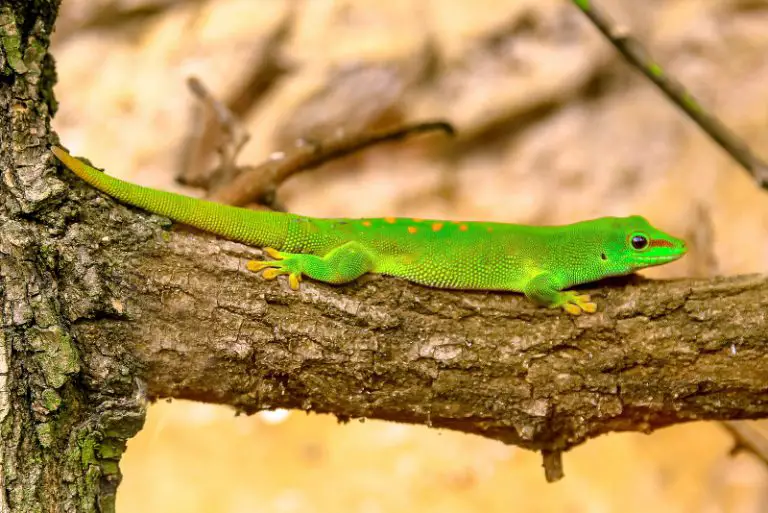
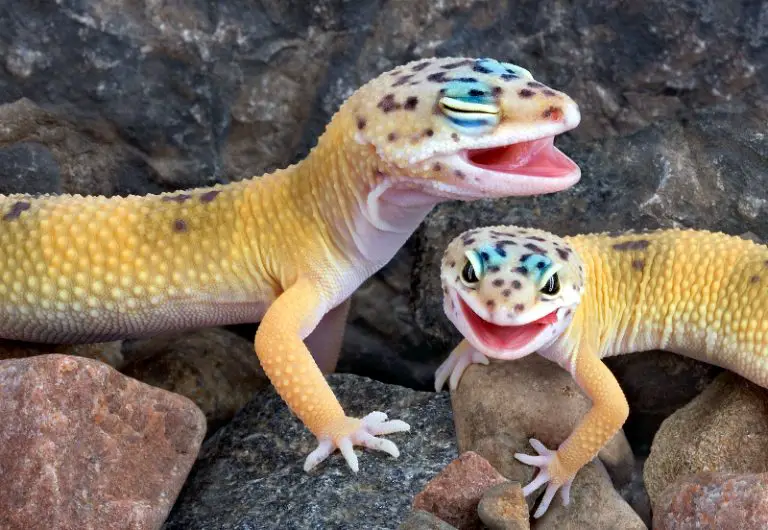
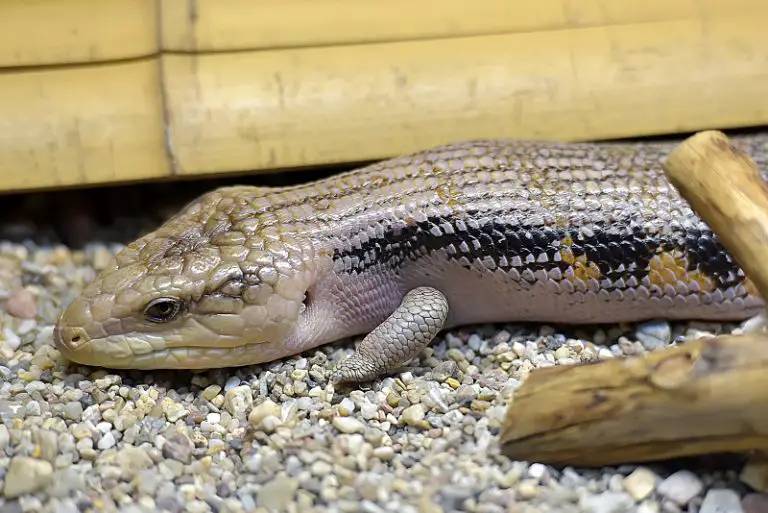
![Can Leopard Geckos Swim? [Must Read]](https://allourcreatures.com/wp-content/uploads/2021/12/cute-leopard-gecko-768x507.jpg)
![What To Feed Leopard Geckos [Full Diet Guide]](https://allourcreatures.com/wp-content/uploads/2021/12/Leopard-Gecko-mealworm-768x513.jpg)
